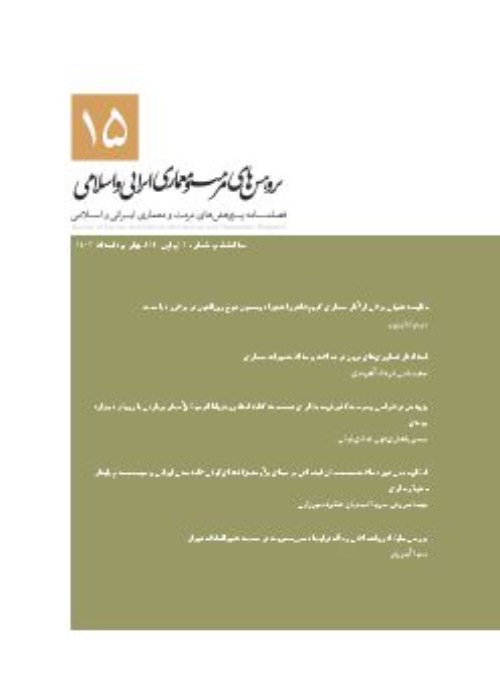Research on the Design and Restoration of the inlaid floor of the Laurentian Library by Michelangelo Buonarroti with the approach of Cesare Brandi's theory
This article is about the research on the Design and Restoration of the inlaid floor of the Laurentian Library by Michelangelo Buonarroti with the approach of Cesare Brandi's theory. This review is based on the concepts and tools of restoration with the aim of preserving works of art and cultural heritage. The purpose of this study is to know and understand the aesthetics and history of the studied subject in an outstanding work of art; by Michelangelo; The main character of the Golden Age of Italy, which has defined the next artistic generations and gave them a strong motivation for the Mannerism movement, and also reflects the views of Cesare Brandi's restoration theory. Hence, the first definition of restoration: "Restoration is the methodological moment of knowing the work of art, in its physical consistency and in its dual polarity of aesthetics and history, with regard to its transfer to the future". What is meant by physical consistency? This is the place of manifestation of the image, the substance on which the form is born and then exists in the world. Hence, the first principle of restoration: "only the substance of the work of art is restored". Then we come to the second principle of restoration: "Restoration should be aimed at re-establishing the potential Unity of the work of art, provided that this is possible without committing artistic forgery or historical forgery and without erasing the work." (Brandi, 2000). Della cultura non si dà ricetta: ma, poiché la cultura non è l'erudizione, cultura diviene solo quella che, entrando a far parte della conoscenza, accresce la coscienza.»-Cesare Brandi. "There are no prescriptions for culture: but since culture is not wisdom and knowledge, culture is the only thing that increases conscience by becoming part of knowledge" (Brandi, 1992). Cesare Brandi (1906-1988) was an Italian art historian, art critic, essayist and specialist in restoration theory. The Central Restoration Institute was established in Rome in 1932 with the collaboration of Brandi (Brandi, 2011). He was trained as an art historian and also in contemporary aesthetics. He is a follower of Crochanism in philosophical and literary fields, especially in relation to a form of criticism that considers primarily or exclusively the aesthetic values of a work of art. The philosopher he considered closest to him was Martin Heidegger, although their positions did not coincide; For this reason, he also felt closer to Derrida, especially to his commentary on difference (Fasoli, 2007). His extensive scientific experience and phenomenological references from Plato to Kant, passing through Benedetto Croce, Martin Heidegger and Friedrich Hegel, culminated in what became known as Critical Recovery Theory (Burnett). Brandi's proposals had a great influence on the restoration of Italy in 1972 and, consequently, on the current practice of restoration throughout the world (Heloisa do Carmo, 2016). The restoration of an outstanding work of art begins with its recognition, and then at the first moment of intervention, the work of art is recognized, and restoration is understood as any intervention aimed at restoring its full function. In addition to materials, from visual elements such as: form, space, light, color, decorations, signs and symbols and in place of visual factors: rhythm, contrast, movement and atmospheric and geographical effects, materials and construction techniques created by the artist in the artwork has been investigated. Therefore, knowing the concept of restoration, the subject of the work of art, the potential Unity of the work of art, environmental effects on the work of art and restoration, restoration according to the historical example, restoration according to the aesthetic and historical approach, the space of the work of art and preventive restoration, the moment Intervention is coming. The research method in the studied research is using the descriptive-analytical method, in order to express the research objectives with field studies, library studies, translation of reliable scientific sources, technical methods and tools (photography and design with graphic software) in data analysis. The basis of a certain sequence is presented in the restoration of the artwork. Therefore, by knowing the concept of restoration, it is done according to the historical example and the aesthetic approach, which seeks to respect the authenticity of the artwork. As a result, it emphasizes the recognition of the potential Unity of the work of art with regard to its transfer to the future.
- حق عضویت دریافتی صرف حمایت از نشریات عضو و نگهداری، تکمیل و توسعه مگیران میشود.
- پرداخت حق اشتراک و دانلود مقالات اجازه بازنشر آن در سایر رسانههای چاپی و دیجیتال را به کاربر نمیدهد.


